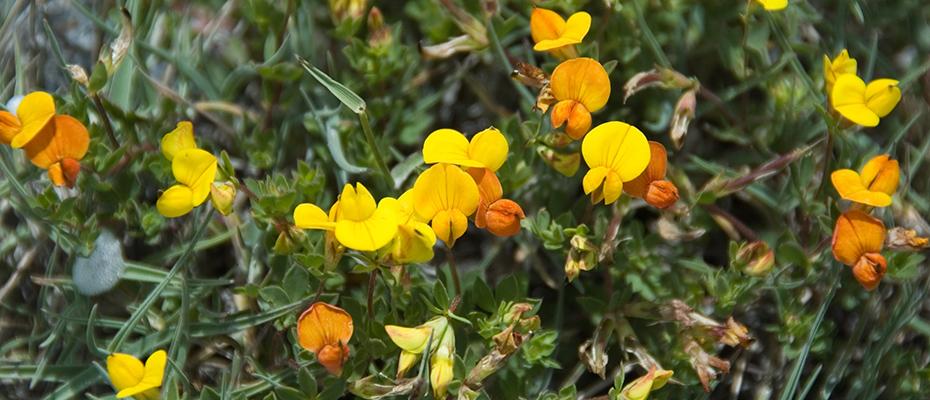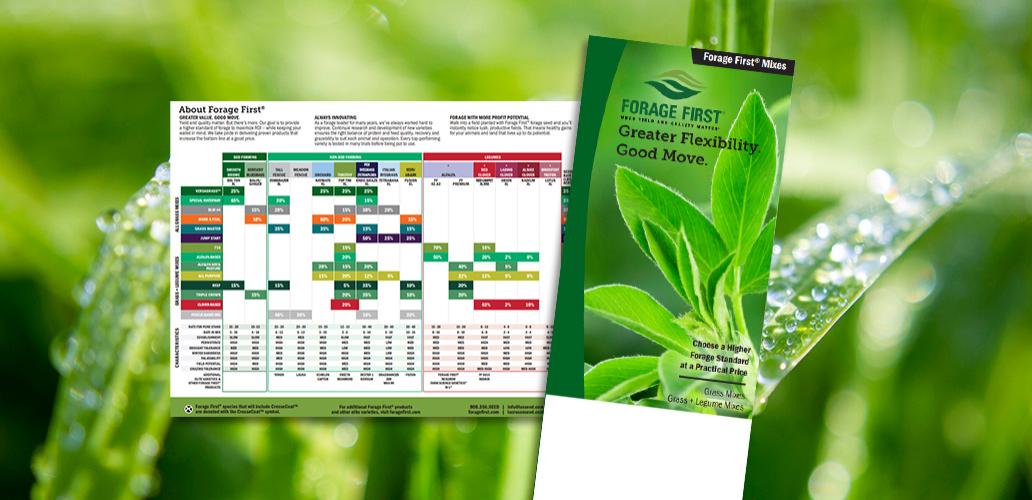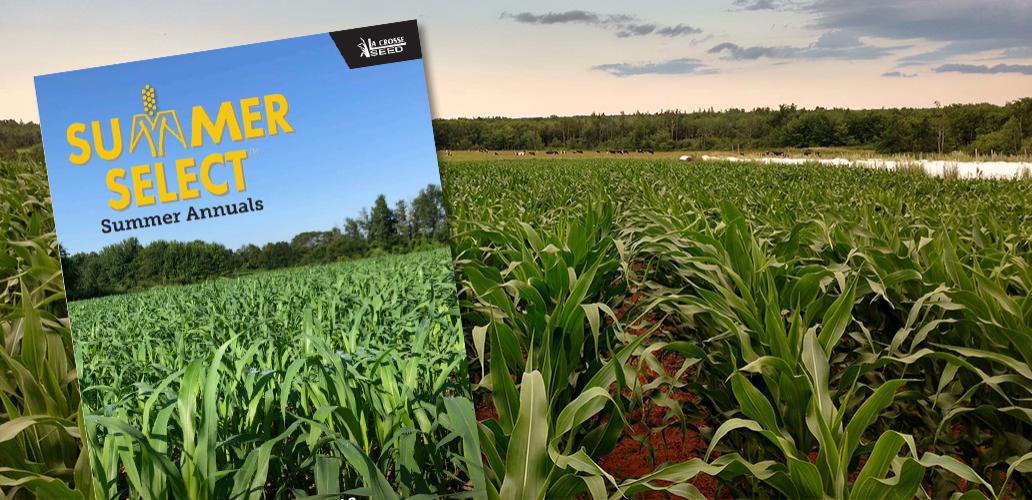Forage First Guide I Summer Select Guide
Greater Value. Good Move. Yield and quality matter. But there’s more. Our goal is to provide a higher standard for forage to maximize ROI– while keeping your wallet in mind. We take pride in delivering proven products that increase the bottom line at a good price.

Birdsfoot Trefoil is a perennial legume that adapts well to production on poorly drained, low-pH soils. It can re-seed itself, is resistant to Phytophthora root rot and numerous alfalfa insects, responds well to fertilization and does not cause bloat in animals. As a result, it is being grown more often in the northern United States and southern Canada where production of other forage legumes is limited.
CHARACTERISTICS:
Establishment: Slow
Persistence: High
Drought Tolerance: Medium High
Winter Hardiness: High
Palatability: High
Yield Potential: Medium
Grazing Tolerance: High
SEEDING:
Seeding Rate:
Alone (lbs./acre): 8-10
Mixes (lbs./acre): 4-5
Seeds/lb.: 370,000
Depth (In.): 1/4
Planting Time:
Mar.-May; Aug.-Oct.
Emergence (days): 7
Life Cycle: Perennial
Soil pH: 6.0-6.5
Adaptation:
Birdsfoot Trefoil is most productive in fertile, well drained soils with a close to neutral pH. However, Birdsfoot Trefoil can be grown on low pH (5.5) soils with low fertility and will tolerate short periods of flooding better than alfalfa. It can tolerate periods of drought and is more suited to soils prone to heaving. Alfalfa will outproduce Birdsfoot Trefoil by 50-80% on well drained, fertile soils, limiting birdsfoot trefoil to areas where alfalfa is difficult to produce.
Establishment:
Birdsfoot Trefoil should be inoculated before planting to ensure sufficient nodulation of the root system for nitrogen fixation. A smooth, firm seedbed is recommended. Seeding depth should not be more than ¼ in. Early spring seeding is generally more successful than late summer seeding.
MANAGEMENT:
When harvested for hay, first cutting should be taken at 1/10 bloom with second cutting mid-late Aug. To maintain birdsfoot trefoil stand, use management system providing sufficient regrowth between cuttings, allowing plant to reseed itself.
Heavy grazing may be needed in spring to reduce growth but close continuous grazing is not recommended since summer regrowth depends on energy supplied by top growth, not root reserves like alfalfa. Leave 3-4 in. of top growth when grazing. Avoid haying or grazing between Sept. 1 and first killing frost so root reserves accumulate for better winter survival and spring growth. Birdsfoot Trefoil is well suited for stockpiling since it maintains its leaves at maturity and after frosts. It responds to proper fertility management which should be determined by soil testing.
- Fast recovery after cutting
- High disease resistance
- Upright growth habit
- Tolerant of poorly drained, low pH soils

.png)
.png)


.png)










